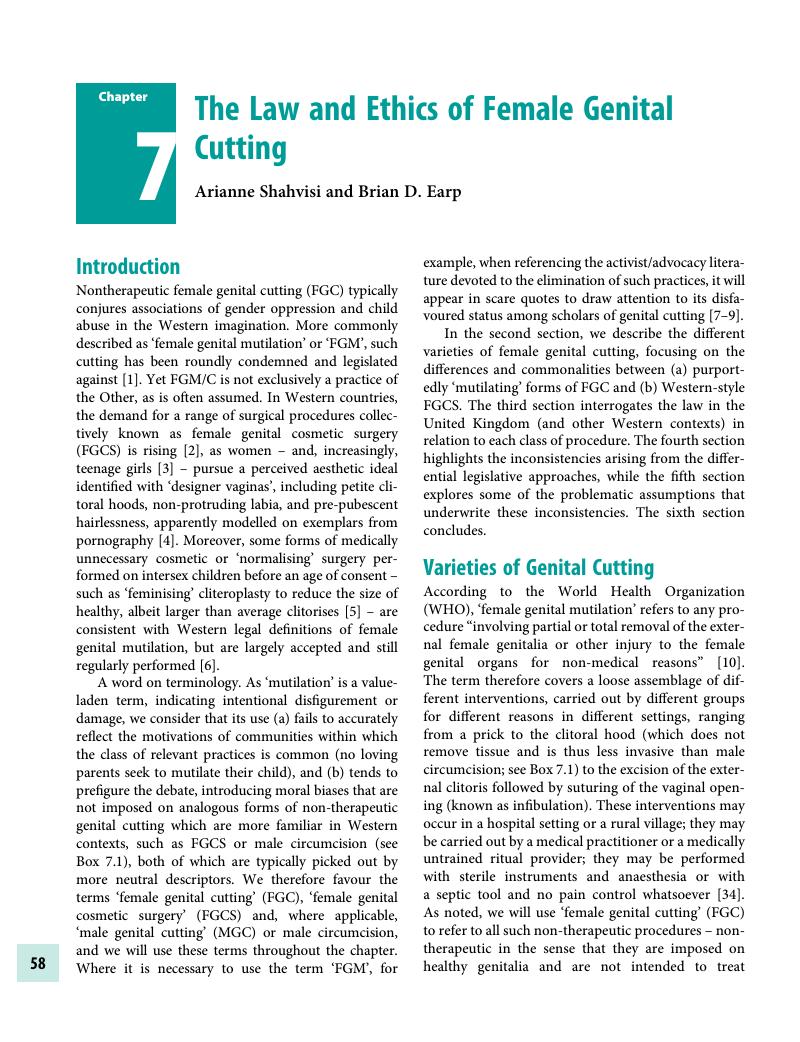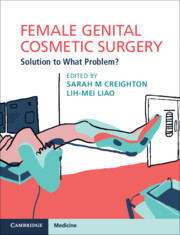Book contents
- Female Genital Cosmetic Surgery
- Female Genital Cosmetic Surgery
- Copyright page
- Contents
- Contributors
- Chapter 1 Female Genital Cosmetic Surgery
- Chapter 2 Female Genital Anatomy
- Chapter 3 Selling a Perfect Vulva? Selling a ‘Normal’ Vulva!
- Chapter 4 The History of Female Genital Cosmetic Surgery in the United States
- Chapter 5 Techniques of Female Genital Cosmetic Surgery
- Chapter 6 Clinical Evidence of the Effects of Female Genital Cosmetic Surgery
- Chapter 7 The Law and Ethics of Female Genital Cutting
- Chapter 8 Choice and Female Genital Cosmetic Surgery
- Chapter 9 A Historical Analysis of Beliefs Supporting Female Genital Cosmetic Surgery
- Chapter 10 Feminist Activism to Challenge the New Industry of Female Genital Cosmetic Surgery
- Chapter 11 Can Better Sex Education Tackle the Rise in Female Genital Cosmetic Surgery?
- Chapter 12 Female Genital Cosmetic Surgery and the Role of the General Practitioner
- Chapter 13 Female Genital Cosmetic Surgery
- Chapter 14 Addressing Female Genital Dissatisfaction and Distress
- Appendix: Resources
- Index
- References
Chapter 7 - The Law and Ethics of Female Genital Cutting
Published online by Cambridge University Press: 07 February 2019
- Female Genital Cosmetic Surgery
- Female Genital Cosmetic Surgery
- Copyright page
- Contents
- Contributors
- Chapter 1 Female Genital Cosmetic Surgery
- Chapter 2 Female Genital Anatomy
- Chapter 3 Selling a Perfect Vulva? Selling a ‘Normal’ Vulva!
- Chapter 4 The History of Female Genital Cosmetic Surgery in the United States
- Chapter 5 Techniques of Female Genital Cosmetic Surgery
- Chapter 6 Clinical Evidence of the Effects of Female Genital Cosmetic Surgery
- Chapter 7 The Law and Ethics of Female Genital Cutting
- Chapter 8 Choice and Female Genital Cosmetic Surgery
- Chapter 9 A Historical Analysis of Beliefs Supporting Female Genital Cosmetic Surgery
- Chapter 10 Feminist Activism to Challenge the New Industry of Female Genital Cosmetic Surgery
- Chapter 11 Can Better Sex Education Tackle the Rise in Female Genital Cosmetic Surgery?
- Chapter 12 Female Genital Cosmetic Surgery and the Role of the General Practitioner
- Chapter 13 Female Genital Cosmetic Surgery
- Chapter 14 Addressing Female Genital Dissatisfaction and Distress
- Appendix: Resources
- Index
- References
Summary

- Type
- Chapter
- Information
- Female Genital Cosmetic SurgerySolution to What Problem?, pp. 58 - 71Publisher: Cambridge University PressPrint publication year: 2019
References
- 31
- Cited by

